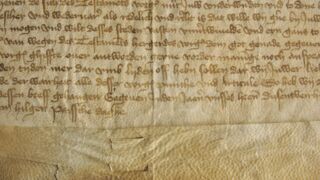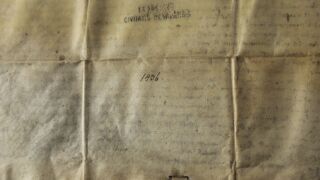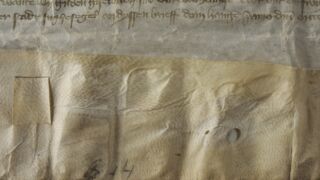A 1.1. Follicle marks, hair holes
Pattern of follicle marks.
If during the preparation of the parchment, some of the grain layer was preserved, it is possible to determine the animal species based on the pattern of the follicle marks. The degradation or gelatinisation of the parchment may often be related to the follicles marks in the grain layer. As the result of the parchment’s degradation in the region of the holes is significantly more yellow and thereafter, the pattern of the follicle marks is clearly discernible on the surface of the skin.

Karvanääpsuaugud.
Karvanääpsuaukude muster degradeerunud pärgamendis.
Dokumenteeritud degradeerunud pärgamendis on karvanääpsuaukude muster nähtav nii verso kui recto poolel.

Ürik TLA.230.1-i. 617 1436 a.
Karvanääpsuaugud.
Kui pärgamendi valmistamise viis on olnud selline, et osa pindmisest, karvanääpsuaukude ala paksusest (grain layer), on jäetud verso poolele alles, siis selles alas degradeerub pärgament kiiremini ja karvanääpsuaukude muster muutub degradeerunud pärgamendis hästi nähtavaks.

Ürik TLA.230.1-i.644,
1441. a.
Karvanääpsuaugud.
Karvanääpsuaukude muster pärgamendi verso poolel.

